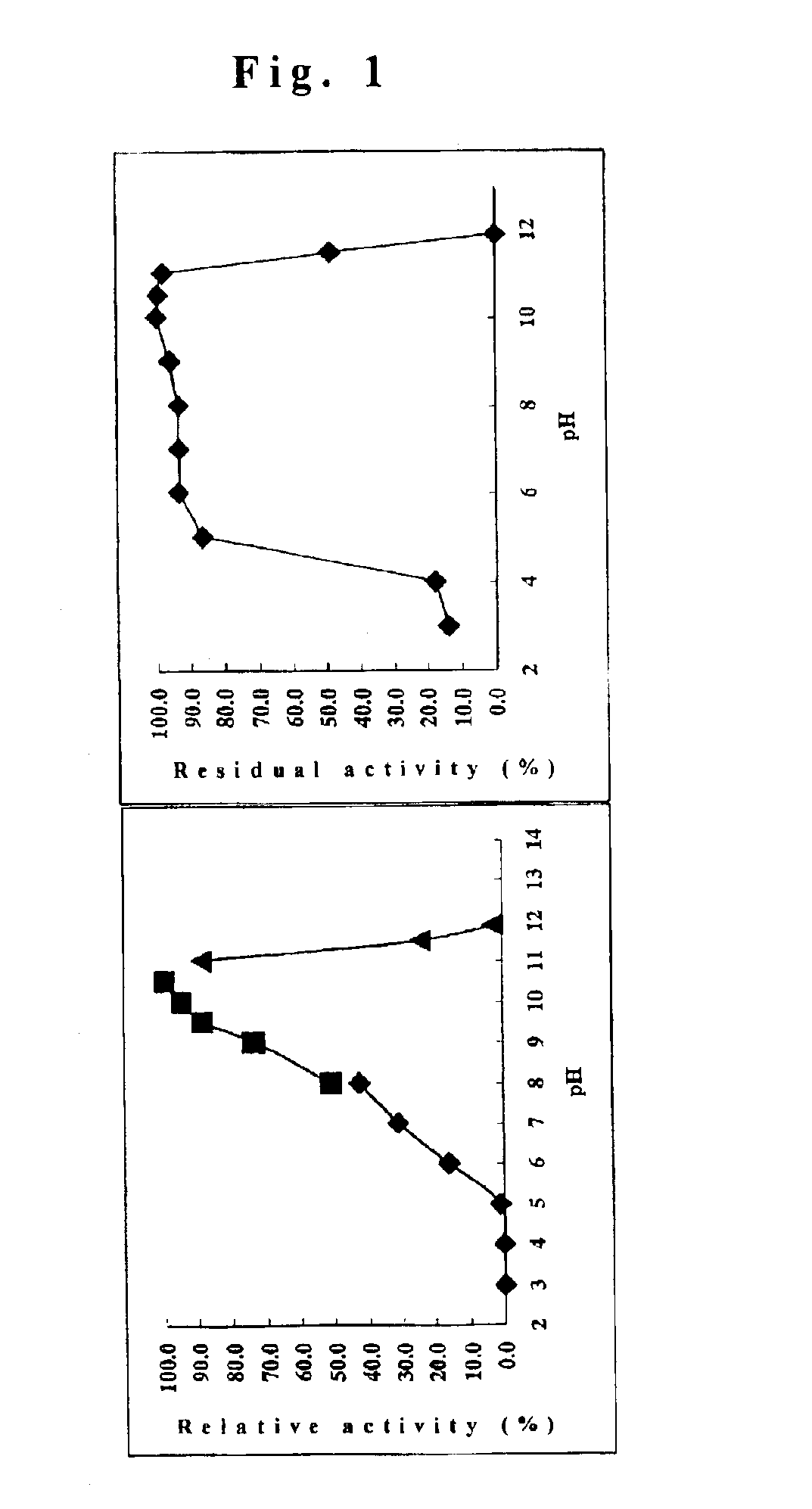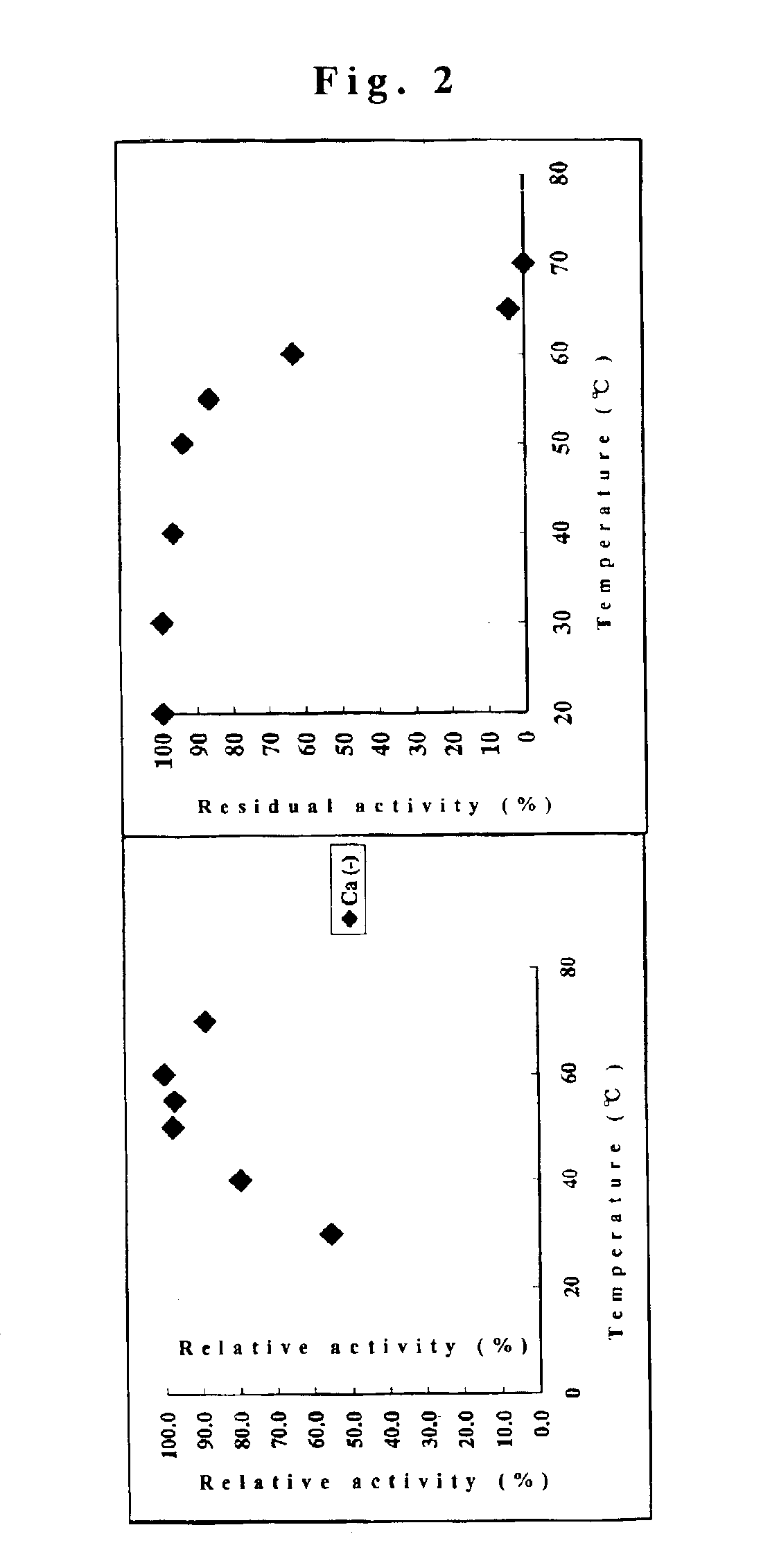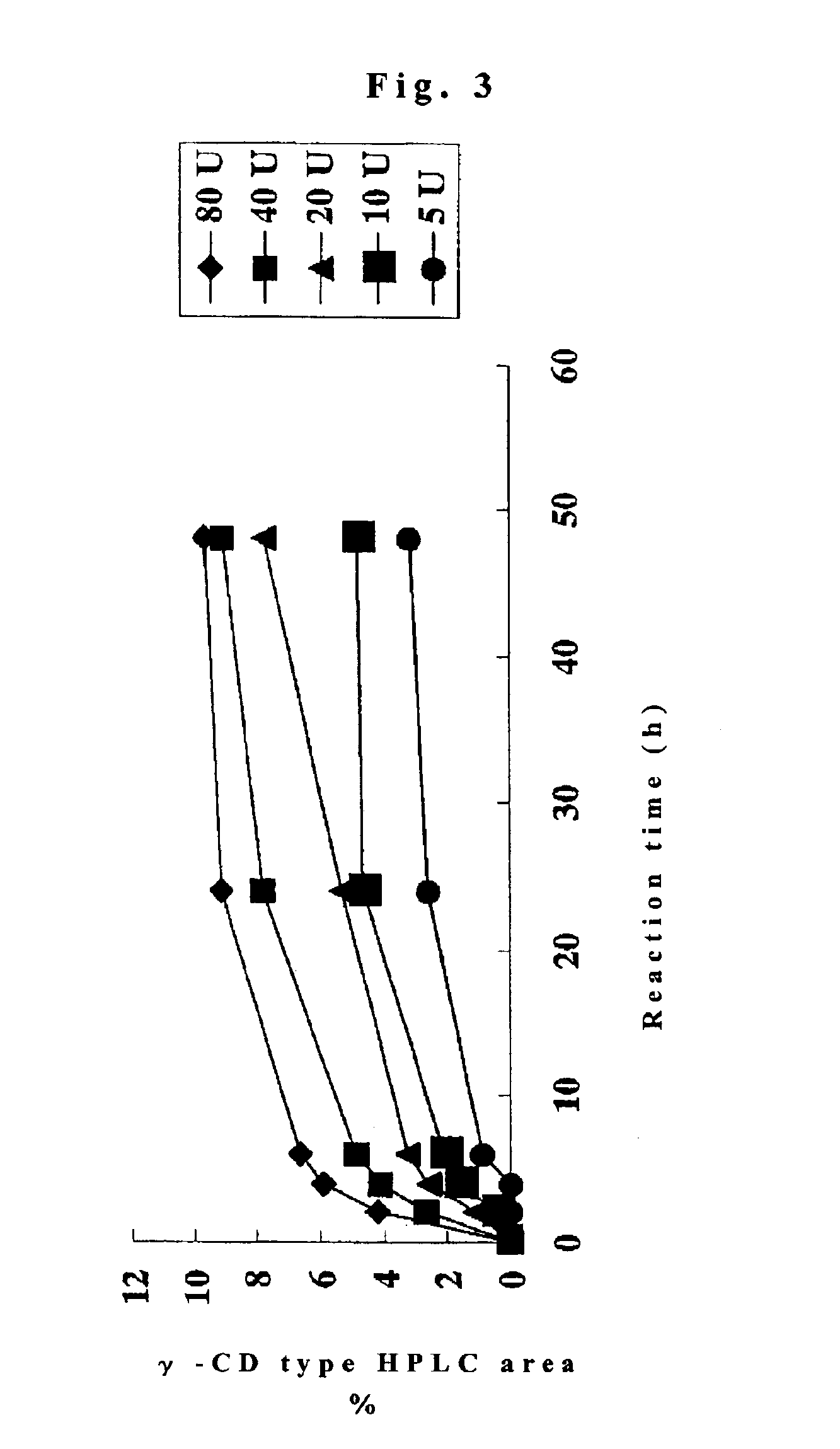Cyclodextrin glucanotransferase and its method of manufacture
a technology of cyclodextrin and glucanotransferase, which is applied in the direction of enzymology, peptide/protein ingredients, transferases, etc., can solve the problem that the cd produced by the original activity does not substantially decreas
- Summary
- Abstract
- Description
- Claims
- Application Information
AI Technical Summary
Benefits of technology
Problems solved by technology
Method used
Image
Examples
embodiment 1
[0057]Bacillus clarkii 7364 strain (FERM BP-7156) was cultivated with shaking for 48 hours at 37° C. in a liquid medium comprising a carbon source in the form of 1.0 percent (w / v) of Neotack #30T (made by Nihon Shokuhin Kako Co., Ltd.), a nitrogen source in the form of 0.5 percent Soyflower-FT (made by Nisshin Oil Mills, Ltd.), 0.5 percent yeast extract (made by Difco), 0.1 percent K2HPO4, 0.02 percent MgSO4.7H2O, and 0.8 percent Na2CO3. CGTase was secreted into the culture solution (Blue value method 20 U / mL culture supernatant).
[0058]The CGTase obtained was purified by affinity chromatography. The physical properties thereof are given in Table 2.
embodiment 2
[0059]The culture supernatant solution obtained in Embodiment 1 was concentrated with a UF concentration membrane (PM-10) to obtain a crude enzyme solution and a saccharification test was conducted. The concentrated solution had an activity of 55 U / mL (Blue value method). A substrate solution was first prepared by dissolving a substrate in the form of soluble starch to 10 percent (w / v) in 50 mM glycine-NaCl—NaOH buffer (pH 10.0). The crude enzyme solution was then added in a manner yielding 80, 40, 20, 10, and 5 U / g-DS to 5 mL of the substrate solution and reacted at 50° C. Sampling was conducted at hours 2, 4, 6, 24, and 48 from the start of the reaction. HPLC Methods 1 and 2 were then employed to calculate the quantities of γ-CD produced (FIG. 3). The results revealed that when 80 U / g of DS was added, produced were 9.7 percent γ-CD, 1.7 percent α-CD, and 0.9 percent β-CD (HPLC area) in 48 hours .
embodiment 3
[0060]Corn starch was liquefied by the usual method using α-amylase to prepare a liquid starch solution with a concentration of 20 weight percent and a glucose equivalent of 7. Next, the liquid starch solution was adjusted to pH 7. The culture supernatant solution described in Embodiment 1 was concentrated using an UF concentration membrane (PM-10) to obtain a crude enzyme solution, to which added 450 unit / g substrate and reacted for 48 hours at 55° C. Subsequently, the reaction solution was heated to deactivate the enzyme. Purification such as decoloration and ion-exchange were conducted to prepare a CD-comprising syrup. The sugar composition thereof is given in Table 3. The CD content was determined by HPLC Methods 1 and 2.
[0061]
TABLE 3α-CD1.7 percentβ-CD0.8 percentγ-CD8.2 percentOther89.3 percent sugars
PUM
| Property | Measurement | Unit |
|---|---|---|
| Temperature | aaaaa | aaaaa |
| Temperature | aaaaa | aaaaa |
| Fraction | aaaaa | aaaaa |
Abstract
Description
Claims
Application Information
 Login to View More
Login to View More - R&D
- Intellectual Property
- Life Sciences
- Materials
- Tech Scout
- Unparalleled Data Quality
- Higher Quality Content
- 60% Fewer Hallucinations
Browse by: Latest US Patents, China's latest patents, Technical Efficacy Thesaurus, Application Domain, Technology Topic, Popular Technical Reports.
© 2025 PatSnap. All rights reserved.Legal|Privacy policy|Modern Slavery Act Transparency Statement|Sitemap|About US| Contact US: help@patsnap.com



